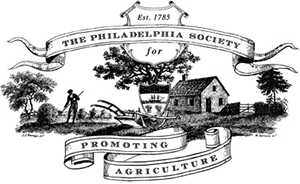Historically farmers have been looked upon very favorably as the providers of our food and for looking after our farmland. However “factory farming” often seems to be used in a derogatory way to describe modern farming. Most industries have had to mechanize in order to be able to provide the volume, quality and financial accessibility of virtually everything. Why has factory farming become such an undesirable and denigrating descriptor for modern farming? Do not consumers realize that they spend less than virtually every other country as a percentage of their income on their food?
Mechanization enabled farmers to farm more land and take advantage of suitable soil and good weather conditions. This has been combined with a sophisticated infrastructure of critical input suppliers – seeds, fertilizer and crop protection chemicals and a highly efficient marketing network. “Factory farming” gets to be used perhaps even more often to define livestock farms which also benefited from scale, research and development to improve livestock management, nutrition and health. Larger and much more sophisticated equipment has been developed not only to speed up operations but improve efficacy so as to allow quicker and timelier operations – seeding, spraying, harvesting etc. The statistics are clear that farms are getting bigger. The 2017 census found that 80,000 big farm operations generated two thirds of farm production.Small and even mid-size farms find it difficult to justify the financial investment in new equipment to ensure timely field operations and so use contractors.
There seems to be less if any criticism of retail food stores which are often very large international companies. They have been able to provide a wide range of food products and their scale allows highly competitive pricing. Farmers markets are popular but the 8,771 markets and farmers supplying customers direct do not offer the range of products provided by super markets.
Scale has definite advantages for both local use and exporting. Exports have become an increasingly critical market for our quality farm products. In fact an overall 20% of our agricultural crops are exported – $143.3 billion – from over 60% of walnuts to 50% of our soybeans, 46% wheat, and between 10-21% of our livestock products. Exports are indeed critical to many of our farmers and to the national economy.
We can and should be proud of our farming industry and must be making every effort to ensure it can thrive.
Farming is heavily dependent on climate and change is being experienced across the country and the world. A recent example is our wine industry. The U.S. is the largest global market for wine and we also have a flourishing wine production industry. However vines are highly dependent on soil type and climate – the French word is “terroir”. Even slight changes in climate can cause variations in quality – hence the reason for annual variations. Producers are busily trying out different rootstocks and also other varieties. “Wine is a bellwether of climate change and much of the notion of terroir comes down to climate so we are reshaping terroir – with varied consequences”. Some California vineyards have significant research programs to find cultural techniques that will ensure the continued production of quality wine.
Our region has been witnessing the spread of wineries – 270 in PA and more than 50 in NJ – and several have been winning national awards. I strongly believe we have good potential for growth locally in our region perhaps even take advantage of climate change.

